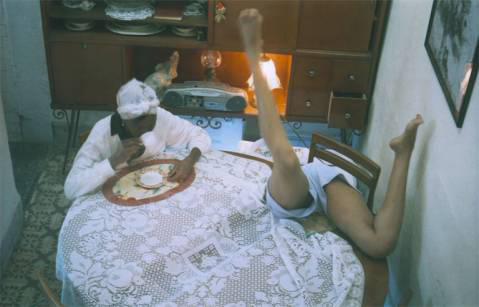
Anexión oculta [Hidden Annexation], 2008
The inseparable unity of life and death is the central theme in Susana Pilar Delahante Matienzo's artistic oeuvre. If life is regarded, at the same time, as a slow process of dying, then whether something appears dead or alive becomes a question of viewpoint. In what she stages in her series of photographs, Anexión oculta, the artist symbolises this connection and demonstrates in absurd situations how a constant presence of death can look and be arranged in harmony with every-day life.
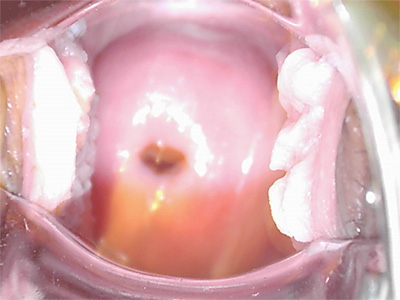
El escandalo de lo Real [The Scandal of the Real], 2006-2007
In a self-experiment, the artist had herself inseminated with a dead man’s semen. 72 hours after death had occurred, the semen was still fertile – as was confirmed by the medical report on her pregnancy. Today's biotechnology makes the artificial manipulation and the designing of every single moment in life possible – and casts doubt on the nature of life as a given and natural destiny. Susana Pilar Delahante Matienzo's experiment demonstrates once more that it is not a clear-cut matter where life begins and where it ends and where the boundaries run between art, technology and nature.
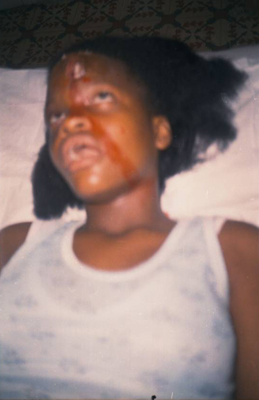
Sin titulo [Untitled], 2002
Susana Pilar Delahante Matienzo's elaborately staged productions featuring herself as a corpse form part of a long tradition of artists’ self-portraits, which, above all, served as memento reaching beyond death and attempting to keep the artist’s memory as vivid as possible. By contrast, Delahante Matienzo in her photographs immortalizes a materialistic truth by simultaneously addressing the objectifying glance of the photographic camera and the moment of death as the production of an image as well as of a corpse. With the works in this series, the artist also refers to the suffering of female victims of violent crime, in whose honour she wants to leave a memorial.
Susana Pilar Delahante Matienzo, * 1984 in Havana (CU), lives and works in Havana (CU)
 Susana Pilar Delahante Matienzo, Anexión oculta [Hidden Annexation], 2008 Susana Pilar Delahante Matienzo, Anexión oculta [Hidden Annexation], 2008
6 photographs (inkjet print), 70 x 100cm
courtesy Susana Pilar Delahante Matienzo
produced in cooperation with ZKM | Center for Art and Media Karlsruhe
Susana Pilar Delahante Matienzo, El escandalo de lo Real [The Scandal of the Real], 2006-2007
Heterologous Artificial Insemination, 2 photographs (inkjet print),each 20 x 30cm
2 copies of medical documents
courtesy Susana Pilar Delahante Matienzo
produced in cooperation with ZKM | Center for Art and Media Karlsruhe
Susana Pilar Delahante Matienzo, Sin titulo [Untitled], 2002
4 photographs (inkjet print), 80 x 60cm
courtesy Susana Pilar Delahante Matienzo
produced in cooperation with ZKM | Center for Art and Media Karlsruhe
|
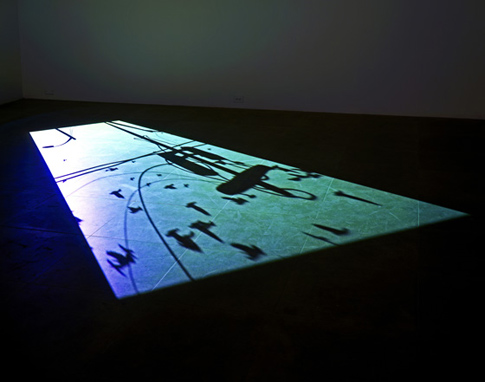
1st Light, 2005
Since particularly 9/11 and the war in Iraq, Paul Chan has become a key figure in the American art scene as well as in political activism. As part of the series The 7 Lights, the computer-animated video 1st Light describes a vision of Biblical elation – the ascending of the believers to Heaven – making reference to 9/11. The floor projection shows shadowy silhouettes of bodies and everyday objects falling to the ground and equally rising towards the sky. This evokes the 1969 images of floating astronauts as much as those of bodies tumbling from the burning towers – iconic images of hope and terror, of utopia and the apocalypse merge. They show how Chan's deconstructivist critique of civilisation rests on the idea that a random happiness is possible.
Paul Chan, * 1973 in Hong Kong (CN, formerly GB), lives and works in New York (USA)

Paul Chan, 1st Light, 2005
digital video projection (colour, no sound)
14 min., loop
courtesy of Greene Naftali, New York
photo: Jean Vong
|
|
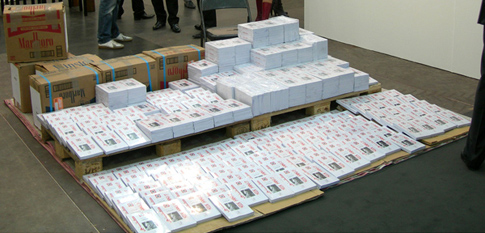
 (Mein Kampf), 2006 (Mein Kampf), 2006
In his works, the Swiss artist Christoph Büchel often makes use of artefacts from the mass media, like military propaganda videos, political pamphlets or original knotted carpets, which show motifs of, for example, the attack on the World Trade Centre.
Büchel's 2006 work  (My Struggle) consists of 1000 copies of the Arabic edition of Hitler’s Mein Kampf [My Struggle], which are arranged in an improvised sales-setting on simple Europallets and in the original U.S. Marlboro shipping cartons used by the Arab publisher. The book has been a bestseller in Arab countries and points to the relations of the National Socialists to the Arab world reaching back into the 1930's. A key figure in this connection is Haj Amin Al Husseini (1893–1974), a driving force of Palestinian nationalism and an honorary member of the SS. As the founder of the Bosnian-Muslim SS Division Handzar, he was centrally involved in the genocide against Serbian and Jewish populations. His nephew and political protegé Yasser Arafat actually set the name Al-Hussein aside, yet demonstrably paid his uncle great political respect all his life. (My Struggle) consists of 1000 copies of the Arabic edition of Hitler’s Mein Kampf [My Struggle], which are arranged in an improvised sales-setting on simple Europallets and in the original U.S. Marlboro shipping cartons used by the Arab publisher. The book has been a bestseller in Arab countries and points to the relations of the National Socialists to the Arab world reaching back into the 1930's. A key figure in this connection is Haj Amin Al Husseini (1893–1974), a driving force of Palestinian nationalism and an honorary member of the SS. As the founder of the Bosnian-Muslim SS Division Handzar, he was centrally involved in the genocide against Serbian and Jewish populations. His nephew and political protegé Yasser Arafat actually set the name Al-Hussein aside, yet demonstrably paid his uncle great political respect all his life.
 (Mein Kampf), was originally planned in 2006 as a provisional memorial for the Residenzplatz in Salzburg, on the very site of the first burning of books in Austria, as organised by the Nazis in 1938, and was censored/rejected in the context of the international controversy around the (Mohammed) caricatures in 2006 and of the Salzburg Festival. (Mein Kampf), was originally planned in 2006 as a provisional memorial for the Residenzplatz in Salzburg, on the very site of the first burning of books in Austria, as organised by the Nazis in 1938, and was censored/rejected in the context of the international controversy around the (Mohammed) caricatures in 2006 and of the Salzburg Festival.
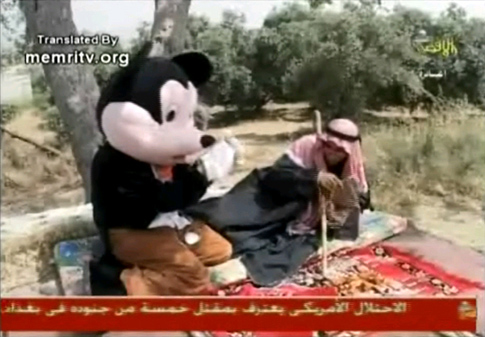
Tomorrow's Pioneers (Farfour), 2007
Tomorrow's Pioneers is an interactive TV-series for children broadcast weekly by the official television station of the Hamas, Al-Aqsa TV. Christoph Büchel uses this medial ready-made to comment ironically on the religious polit-propaganda by the media. Its main protagonist is Farfour, a mouse-twin of the Western Mickey Mouse. As a member of the Palestinian Islamic resistance movement, this character's lively and entertaining manner indoctrinates its very young audience with hatred directed towards Israel and the American imperialism. Büchel’s medial ready-mades are often not directly recognisable as pledges of reality – their laconic presence is simply too much of a surprise in the cultural context of this locality (and still more in the context of the exhibition), where they deploy their eccentrically provocative, disturbing impact.
Christoph Büchel, * 1966 in Basel (CH), lives and works in Switzerland
 Christoph Büchel, Christoph Büchel,  (Mein Kampf), 2006 (Mein Kampf), 2006
1.000 copies of Mein Kampf (arabic translation),
tarp, cashier box, chair, palettes, boxes
courtesy the artist and Hauser & Wirth Zürich London
photo: Ch. Büchel
Christoph Büchel, Tomorrow's Pioneers (Farfour), 2007
video (colour, sound)
10:59 min., loop
courtesy the artist and Hauser & Wirth Zürich London
|
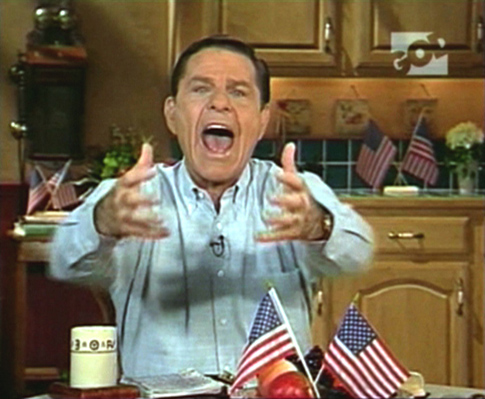
The Secret of the Most High, 2003
Der niederländische Videokünstler Peter Bogers erkundet die ästhetischen und technischen Möglichkeiten filmischer Strukturen. Unter Verwendung von eigenem Material und found footage setzt er der zeitgenössischen Beschleunigung der Bildwelten oft die Sezierung seiner Videos bis aufs Einzelbild entgegen. In der Arbeit The Secret of the Most High schneidet Bogers verschiedene Bild- und Tonaufnahmen gegeneinander: Sequenzen eines religiösen Fernsehkanals, in denen ein amerikanischer Fernsehprediger (in seiner Küche sitzend!) das Wort Gottes verkündet, werden unvermittelt entschleunigt und mit gesungenen Korantexten unterlegt. Die Kontrastierung der beiden Glaubensrichtungen wird auf die Spitze getrieben, und doch offenbaren sie in ihrer Gegenüberstellung zugleich unerwartete Gemeinsamkeiten.
Peter Bogers, * 1956 in Dordrecht/NL, lebt und arbeitet in den Niederlanden
 Peter Bogers, The Secret of the Most High, 2003 Peter Bogers, The Secret of the Most High, 2003
Videoinstallation (Farbe, Ton)
10 min., Loop
Courtesy Netherlands Media Art Institute, Amsterdam
Mit freundlicher Unterstützung der Botschaft des
Königreichs der Niederlande in Berlin
|
|



